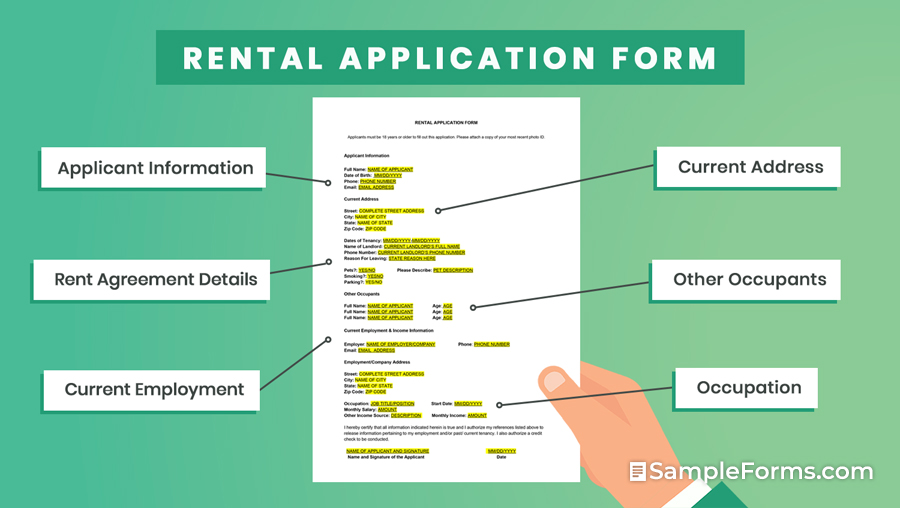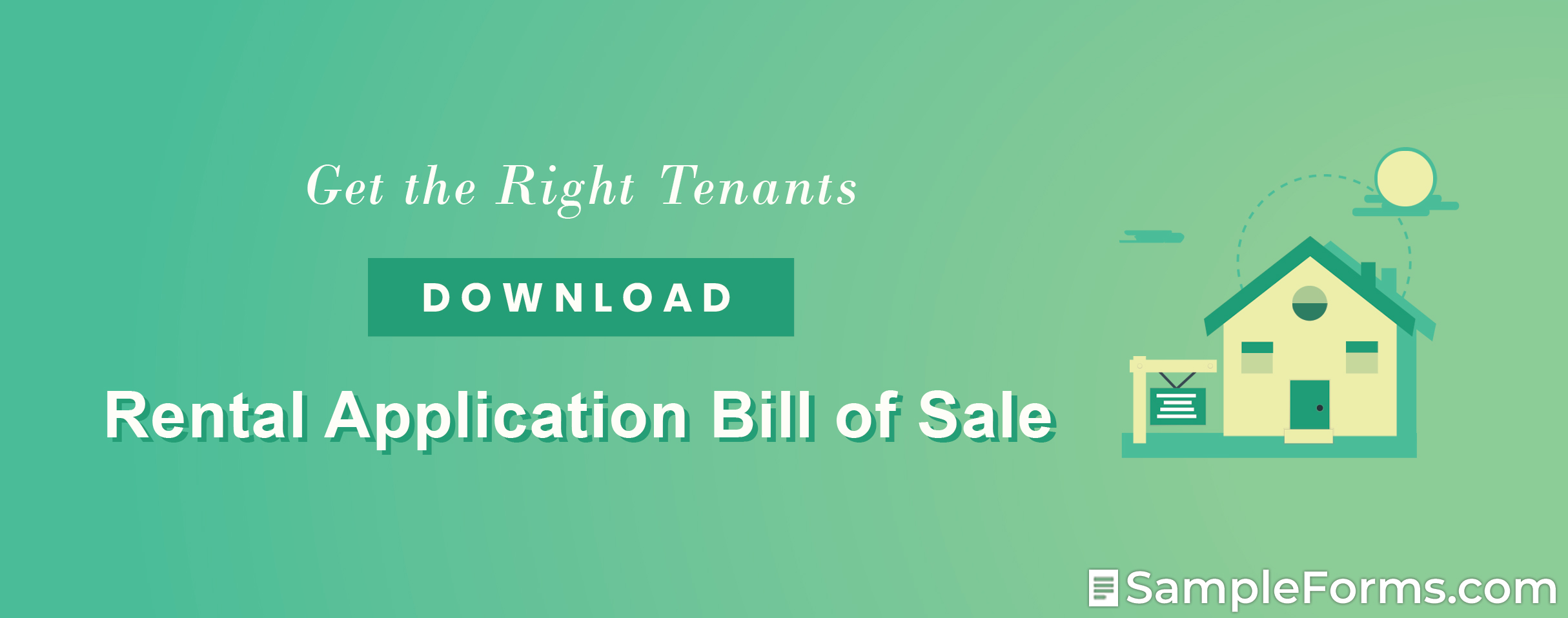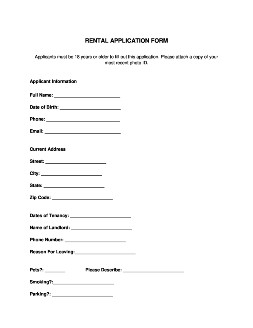- Eviction Notice Forms
- Power of Attorney Forms Forms
- Bill of Sale (Purchase Agreement) Forms
- Lease Agreement Forms
- Rental Application Forms
- Living Will Forms Forms
- Recommendation Letters Forms
- Resignation Letters Forms
- Release of Liability Agreement Forms
- Promissory Note Forms
- LLC Operating Agreement Forms
- Deed of Sale Forms
- Consent Form Forms
- Support Affidavit Forms
- Paternity Affidavit Forms
- Marital Affidavit Forms
- Financial Affidavit Forms
- Residential Affidavit Forms
- Affidavit of Identity Forms
- Affidavit of Title Forms
- Employment Affidavit Forms
- Affidavit of Loss Forms
- Gift Affidavit Forms
- Small Estate Affidavit Forms
- Service Affidavit Forms
- Heirship Affidavit Forms
- Survivorship Affidavit Forms
- Desistance Affidavit Forms
- Discrepancy Affidavit Forms
- Guardianship Affidavit Forms
- Undertaking Affidavit Forms
- General Affidavit Forms
- Affidavit of Death Forms
House Rental Application Form
There are many reasons why people move from one place to another. It could either be for work, study, business, or all of the above. That’s why today, renting is a cost-efficient way of having a place to stay temporarily. For a landlord, however, it’s better to know the tenant first before letting anyone rent their property. And, the only way to do that is for the tenant to complete a rental application form. Read More
House Rental Application Form
- Where should I submit the rental application form for a background check?
- Is a rental application form considered as a rental agreement?
- What happens if the applicant doesn’t sign the rental application form?
- What are the grounds for rejecting an applicant’s rental application?
- What should I do if I reject an applicant’s rental application?
What Is a Rental Application Form?

A rental application form is a document that landlords use to screen rental applicants. It allows for the assessment of an applicant’s employment, tenancy, and personal background before letting him rent the property. According to EvictionLab, there are 898,479 tenants evicted from their rented units in 2016 for various reasons. And, screening potential tenants with a rental application form is better than risking your property.
How to Create a Rental Application Form
Screening potential tenants is important before letting them rent or lease your property. This so that you can avoid any potential harm to your property, especially if the tenant is going to use it for unlawful purposes. The most efficient way to screen rental applicants is through the use of a rental application form. And, listed below are the steps on how to create a rental application form.
1. Start With the Applicant’s Personal Information
In creating your rental application form, the first thing you should do is ask for the applicant’s personal information. This inclined the applicant’s name, current address, date of birth, and their contact details. Asking for their personal information has many advantages. One of which is submitting such information to online tenant screening services, such as rentprep.com.
2. Determine the Applicant’s Tenancy History
There’s always a high possibility that your rental applicants are former tenants to another landlord. So asking the applicant’s tenancy history should be the next thing you should do. In your rental application form, ask the tenant’s former rental address, contact details, and the name of its landlord. This information lets you contact and ask the applicant’s landlord about the real reason for leaving them.
3. Ask about Pets and Parking Space
Pets, parking spaces, and other things, such as their smoking habit, are some of the things that you should ask from the applicant. Requesting this information lets you determine the additional fees to impose on them. Aside from that, it also enables you to inform them about your property’s house rules and regulations as well as any penalties should they violate any of them.
4. Know the Applicant’s Employment History
Knowing the applicant’s employment history allows you to see if they have the capacity to pay for the rent. Aside from that, it also lets you see what they do for a living and how much they earn in a month. What’s more, is it also enables you to contact their employers and inquire about the applicant even further.
5. Let the Applicant Sign the Application
Letting the applicant sign the rental application form signifies the truthfulness and correctness of the information they wrote on the form. Plus, it also represents their permission to authorize the names mentioned in the form to release information about them. Lastly, their signature also permits you to have the applicant’s credit history checked as well.
Frequently Asked Questions
Where should I submit the rental application form for a background check?
After an applicant completes and submits the rental application form, it’s highly recommended that you send them to tenant screening companies such as Rentprep. Aside from that, you can also forward a copy of the application form to credit bureaus to know the applicant’s credit history. You can also charge a fee for such background checks, as long as you indicate them on the rental application form itself.
Is a rental application form considered as a rental agreement?
No. A rental application form is a document used to screen and determine if the applicant is worthy of leasing or renting your property. A rental agreement, however, is a different document made after a rental application is approved. Aside from that, a rental agreement outlines the terms and conditions of the rent or lease, unlike that of a rental application form.
What happens if the applicant doesn’t sign the rental application form?
A rental application becomes null and void if the applicant doesn’t sign the rental application form. This subsequently cancels the rental application and any transaction they have with the landlord. Signing the rental application form signifies the correctness of the information inside it. Other than that, it also permits any background checks to be performed on them.
What are the grounds for rejecting an applicant’s rental application?
While most rental applications get approved, others aren’t that so lucky. There many reasons why rental applications get rejected. These are common because the applicant has a bad tenancy history, bad credit scores, or incapacity to pay the rent. But the biggest reason why rental applications get rejected is that the information provided doesn’t match with those given by their references.
What should I do if I reject an applicant’s rental application?
There are a lot of reasons why rental applications get rejected. And If ever you need to reject an applicant’s rental application, the best thing you should do is to send a denial letter to the applicant. You should clearly and politely explain why their application was rejected in detail. You can either choose the mail or e-mail the denial letter to the applicant.
Renting might seem an economical way of having a temporary place to stay. But, it doesn’t mean that something within our pocket’s reach is also that easy to get. Landlords are often wary about who rents or leases their properties, and it’s perfectly logical why. Bad tenants are unhealthy for the landlord’s business, as it may also ruin their reputation, as well. That’s why using a rental application form is better than risking their business.

